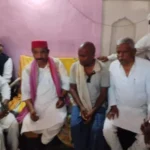Sheikhpura is a district in the Indian state of Bihar, with a rich historical and cultural background. Here’s an overview of its history:
Contents
Ancient and Medieval Period
- Sheikhpura was part of the ancient Magadh region, which was a significant center of power, learning, and trade in India.
- The area was ruled by several dynasties, including the Mauryas (3rd century BCE) and the Guptas (4th–6th century CE).
- During the medieval period, it came under the control of the Delhi Sultanate and later the Mughal Empire.
Origin of the Name
- The district is named after Sheikh Sulaiman, a prominent Sufi saint who lived here during the Mughal era.
- Another belief suggests that the name comes from Sheikh Raja, a local landlord during the Mughal period.
British Colonial Period
- Sheikhpura was part of the Bihar Subah under British rule.
- It was initially a part of Munger district before becoming a subdivision and later a separate district.
Post-Independence
- After India’s independence (1947), Sheikhpura remained a part of Bihar.
- It was officially declared a separate district on July 31, 1994, carved out of Munger.
Cultural and Historical Significance
- The region has several historical sites, including Sheikh Sulaiman’s tomb, which attracts devotees.
- Sheikhpura played a role in the Indian independence movement, with local leaders participating in protests against British rule.
Modern Sheikhpura
- Today, Sheikhpura is known for agriculture, particularly maize, wheat, and pulses.
- It is also emerging as an educational and small-scale industrial hub in Bihar.






